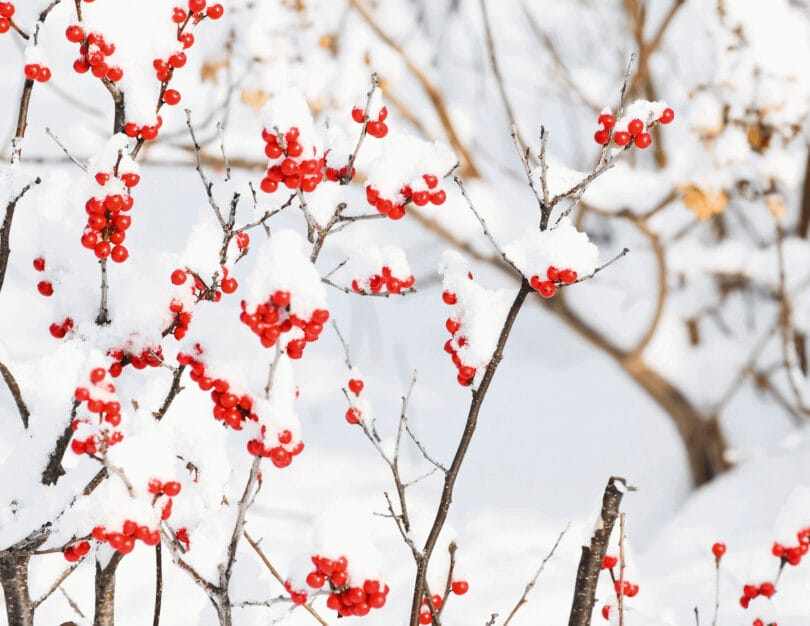Wildlife
Sustaining Winter Wildlife Through Native Plants

As we eagerly anticipate the transformation of our landscape into a winter wonderland with snow-covered fields and frost-kissed trees, wildlife is diligently preparing for the challenges of frigid temperatures and scarce resources. Amidst this serene scene, native plants emerge as unsung heroes, providing a lifeline for animals in search of food, shelter, and protection. In this article, we delve into the symbiotic relationship between winter wildlife and native plants, exploring specific Midwest shrubs and trees that play a crucial role in sustaining our animal companions.
A Winter Feast:
While winter may appear desolate, a closer examination reveals an array of native plants that bear fruits and seeds, offering a vital feast for wildlife. Adapted to the local climate, these plants provide sustenance when it is most needed. One such hero is the Common Winterberry (Ilex verticillata), a deciduous holly whose vibrant red berries persist through the winter. These berries serve as a crucial food source for birds like the cedar waxwing and the northern mockingbird, bringing both color and nourishment to the winter landscape.
Shelter from the Elements:
Winter is not merely a time for feeding; it’s a season when wildlife seeks refuge from biting winds and snowfall. Native plants, with their diverse structures, become essential shelters for creatures during this season. The White Oak (Quercus alba), a majestic deciduous tree native to the Midwest, stands as a robust refuge. Its sturdy branches and persistent leaves create a protective haven against the elements. Birds such as the Black-Capped Chickadee often find comfort in the White Oak’s branches, where they can gather for warmth and safety.
Gray Dogwood (Cornus racemosa), another winter champion, provides a sanctuary with its multi-stemmed, shrubby structure. The vibrant red branches not only add a splash of color to the winter landscape but also establish a protective thicket, offering refuge for small mammals and birds seeking shelter from the elements. This hardy native shrub showcases its ecological importance by ensuring wildlife has a secure place to weather the winter months.
Year-Round Planting for Winter Abundance:
To uphold the well-being of winter wildlife, the cultivation of native plants must extend throughout the seasons. The Bur Oak (Quercus macrocarpa), a sturdy native tree in the Midwest, exemplifies the significance of year-round planting efforts. With its broad, spreading branches and robust acorns, the Bur Oak plays a vital role in sustaining wildlife during the winter months. Its acorns, produced abundantly in the fall, serve as a nutritious food source for various animals, including squirrels and deer, ensuring a continuous connection between this native tree and the wildlife it supports. The Bur Oak underscores the notion that promoting biodiversity is an ongoing commitment, even in the winter landscape.
Establishing a haven for winter wildlife goes beyond seasonal goodwill; it’s a year-round dedication to nurturing biodiversity. The integration of native plants into our landscapes guarantees that our animal companions find the sustenance and shelter essential for weathering the winter months. While we appreciate the serene beauty of winter, let’s also revel in the resilience of nature and acknowledge our responsibility to preserve its delicate balance.